15 Unexpected Items Around Your House That Double as Baby Toys
Babies are naturally curious explorers, eager to touch, taste, and interact with their surroundings. Surprisingly, many safe household items can capture their attention, offering opportunities for creativity, learning, and play. From the kitchen to the closet, these everyday objects provide rich sensory experiences that help foster cognitive and motor development. With a watchful eye and a little imagination, parents can transform ordinary items into stimulating toys, making playtime both enjoyable and resourceful. Learn more about safe play for infants.
1. Plastic Measuring Cups
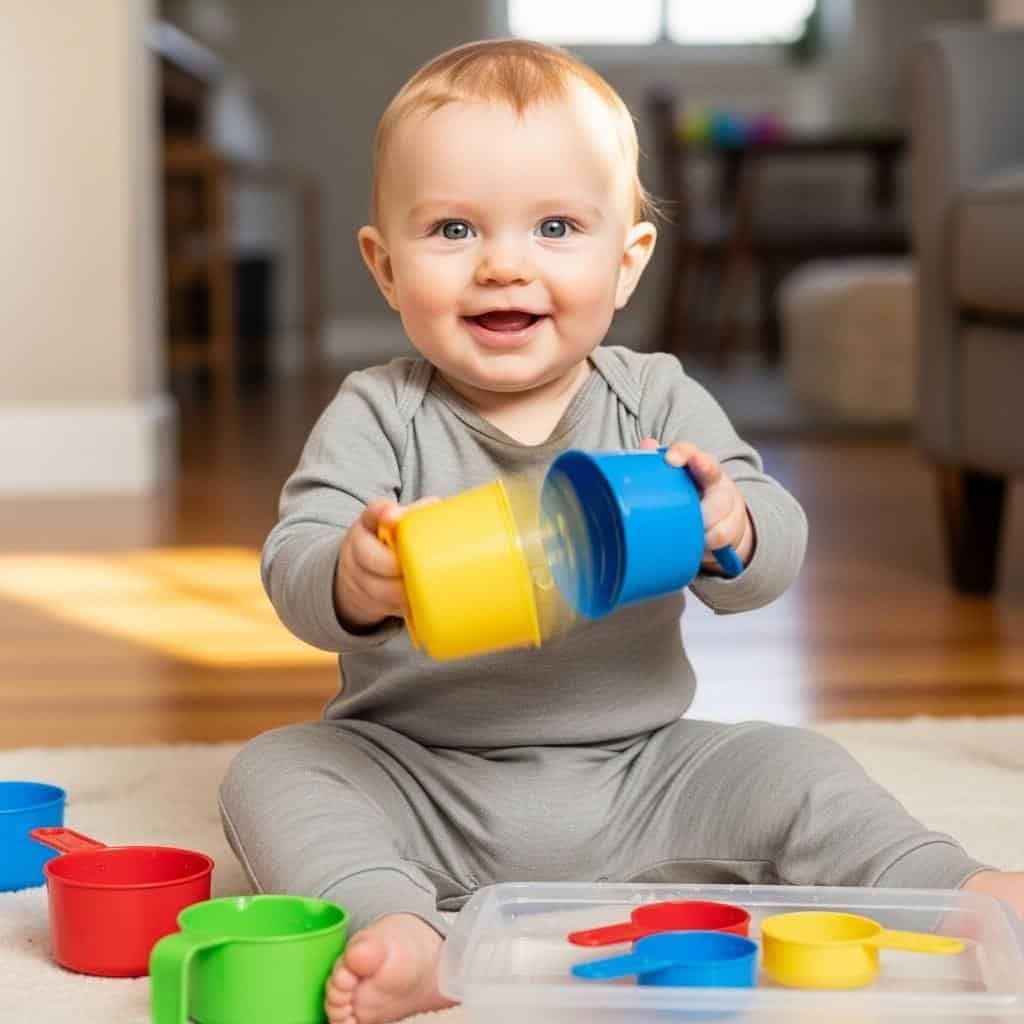
Plastic measuring cups are lightweight, easy for little hands to grasp, and serve as excellent stacking or nesting toys. Babies delight in banging them together, exploring the variety of sizes, and even using them during supervised water play. These household staples rival store-bought stacking toys by encouraging fine motor skills, hand-eye coordination, and early math concepts. Plus, their versatility makes them a favorite among resourceful parents.
2. Cardboard Boxes
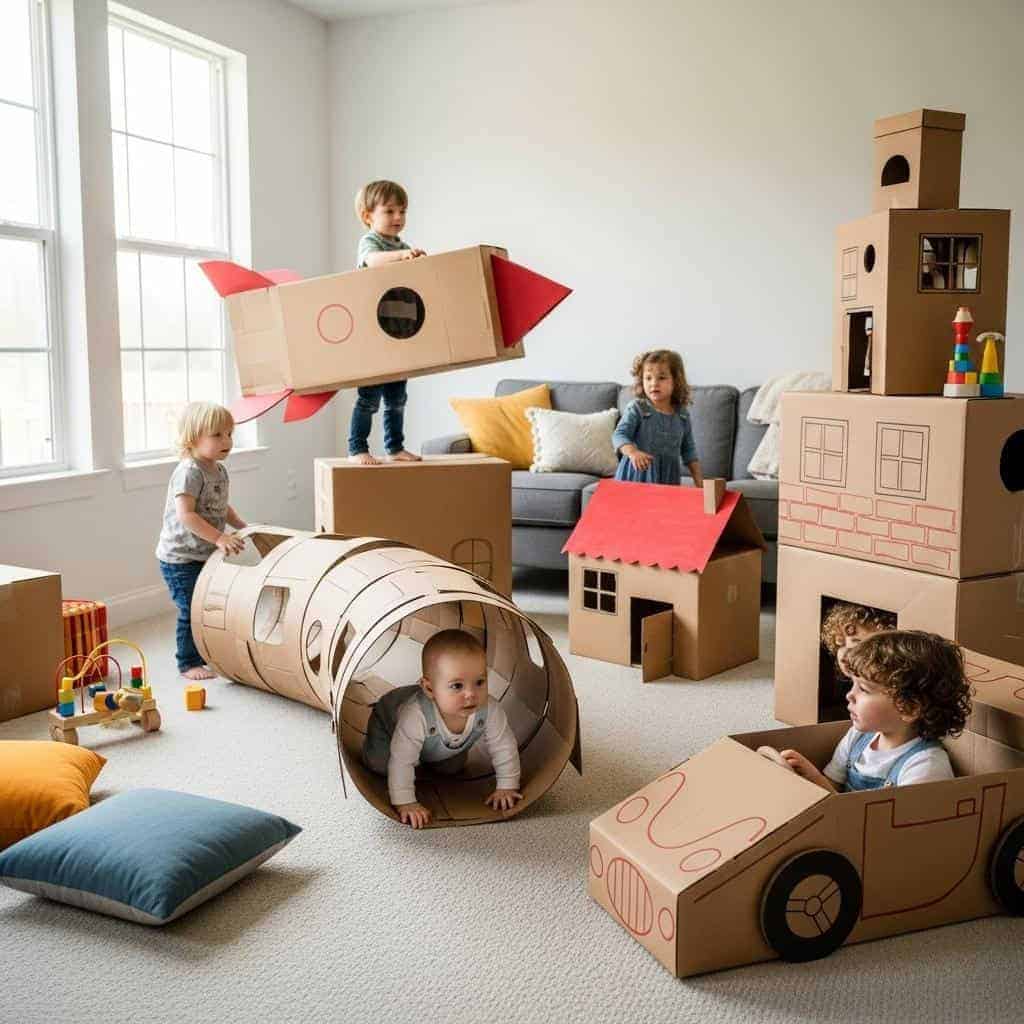
Cardboard boxes are a classic favorite, offering endless possibilities for play. Babies love crawling through them like tunnels, filling and emptying them, or transforming them into forts and push-pull toys. Their open-ended nature inspires imaginative adventures far beyond what expensive, single-use toys can provide. With just a little creativity, a simple box becomes a spaceship, a house, or a race car.
3. Wooden Spoons
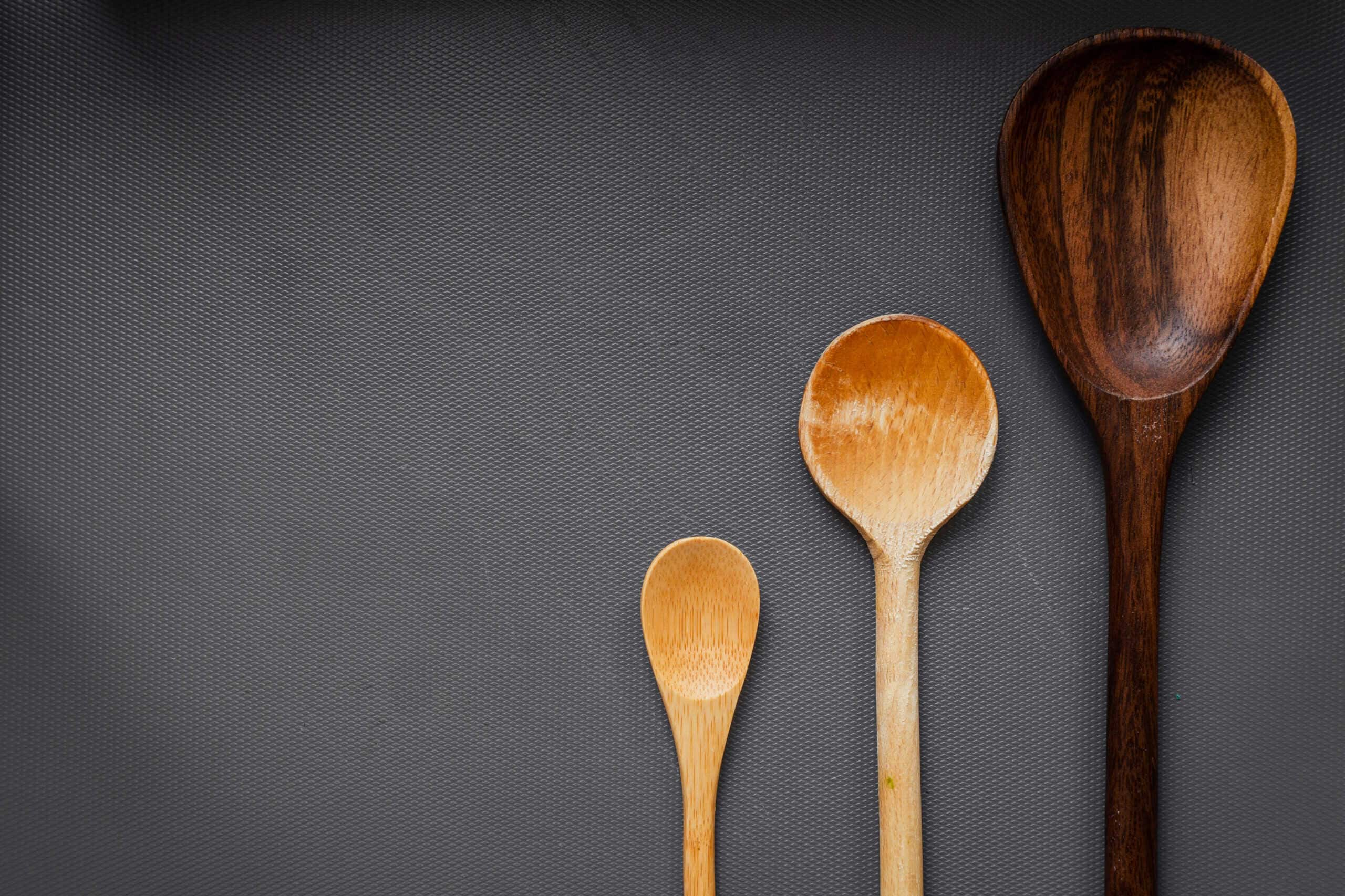
Wooden spoons are safe, sturdy, and just the right size for little hands to hold. Babies enjoy using them for drumming or chewing while teething—always under supervision. Their tactile, natural feel offers a sensory experience similar to specialized musical baby toys, but without the cost. Pairing wooden spoons with pots or pans creates a simple, entertaining drum set that encourages rhythm, coordination, and auditory exploration.
4. Silicone Baking Mats
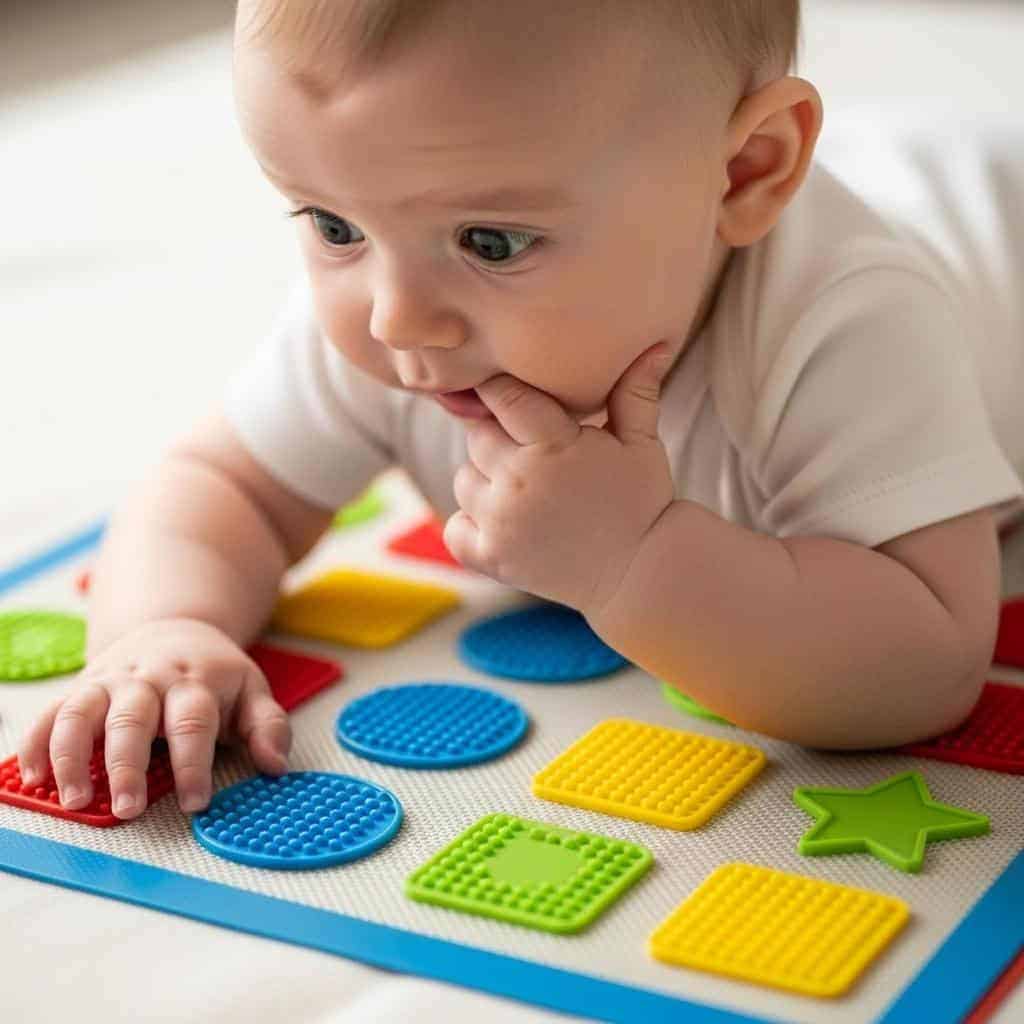
Silicone baking mats are flexible, durable, and incredibly easy to clean, making them a smart addition to tummy time. Babies are drawn to their unique texture and cool surface, which provide sensory feedback similar to high-end sensory mats. These mats are also safe for mouthing and tactile exploration, offering a hygienic, non-toxic alternative to pricier options. Their versatility encourages curious hands and mouths alike.
5. Plastic Bowls
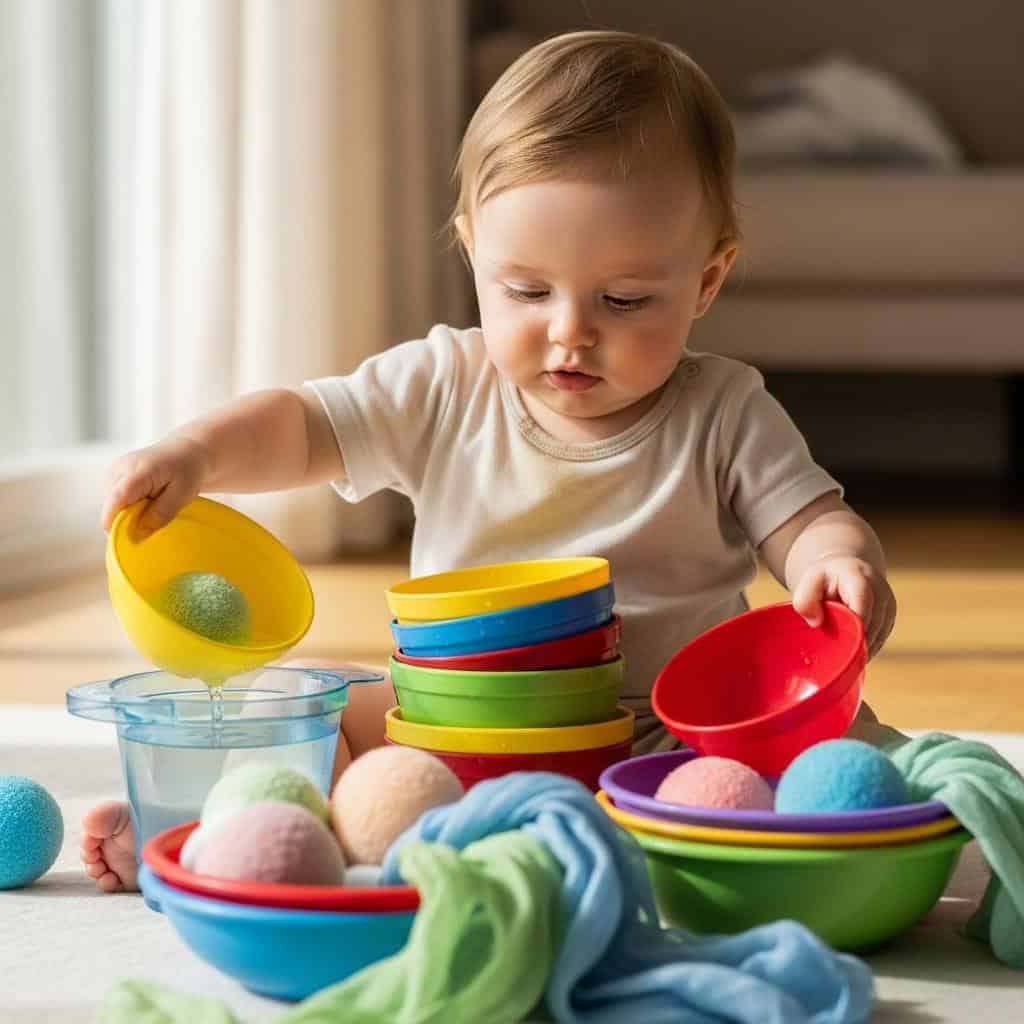
Shallow plastic bowls are incredibly versatile as playthings, perfect for stacking, nesting, or filling with soft objects like balls or scarves. Their lightweight design makes them easy for babies to handle during water or sand play, where scooping and pouring become delightful activities. These everyday items offer developmental benefits similar to commercial shape sorters and stacking toys, encouraging problem-solving and fine motor skills.
6. Old Magazines (Supervised)

Colorful magazine pages naturally attract babies, enticing them to tear, crumple, and explore a variety of textures. With close supervision, old magazines make a stimulating alternative to sensory paper toys, offering opportunities for safe tactile exploration. This activity helps little ones practice fine motor skills, such as grasping and ripping, while also introducing them to vibrant images and colors for early recognition.
7. Clean Laundry Baskets
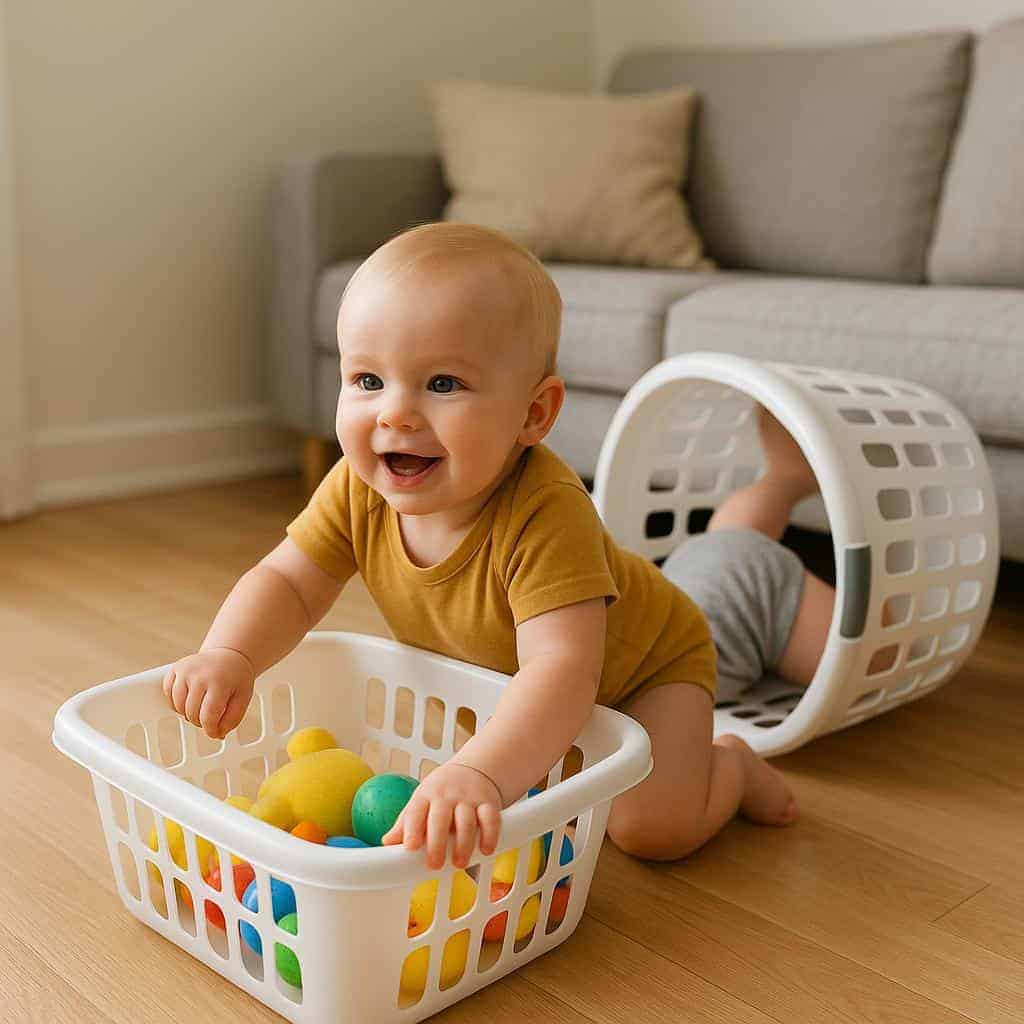
Laundry baskets offer endless play options for babies, functioning as push toys, sorting bins, or even crawling tunnels. Little ones love climbing in and out, pushing the basket across the floor, or filling it with their favorite toys. These simple activities support gross motor development and provide an experience similar to ride-on toys or activity centers. Laundry baskets are sturdy, safe, and perfect for creative play.
8. Scarves or Dish Towels
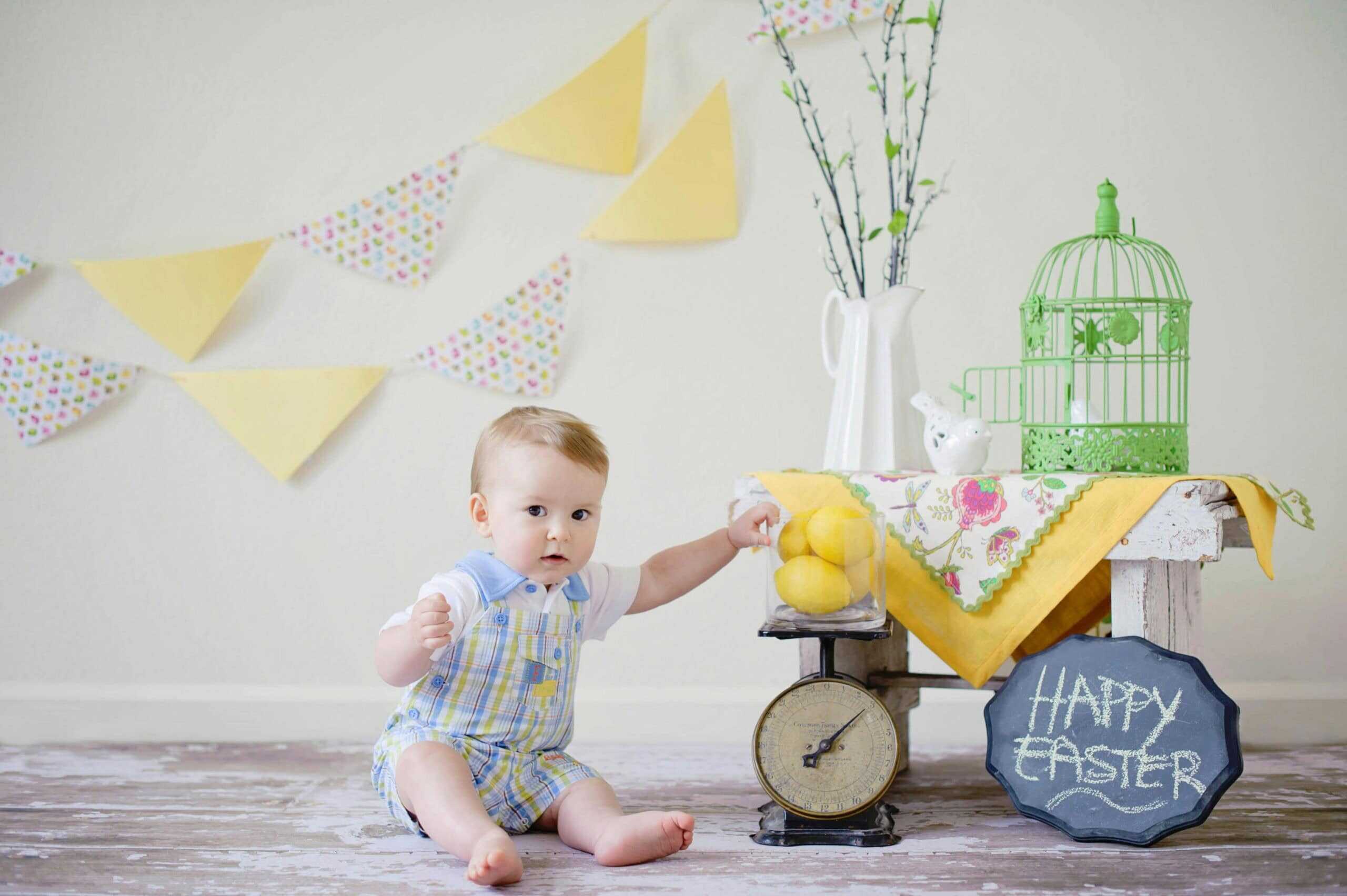
Lightweight scarves or dish towels captivate babies with their soft textures and flowing movement, making them perfect for peekaboo, waving, and sensory play. These household items mimic the appeal of commercial sensory scarves, offering both visual stimulation and tactile exploration. Babies love watching the fabric flutter, feeling it against their skin, and engaging in interactive games that support their development.
9. Empty Water Bottles
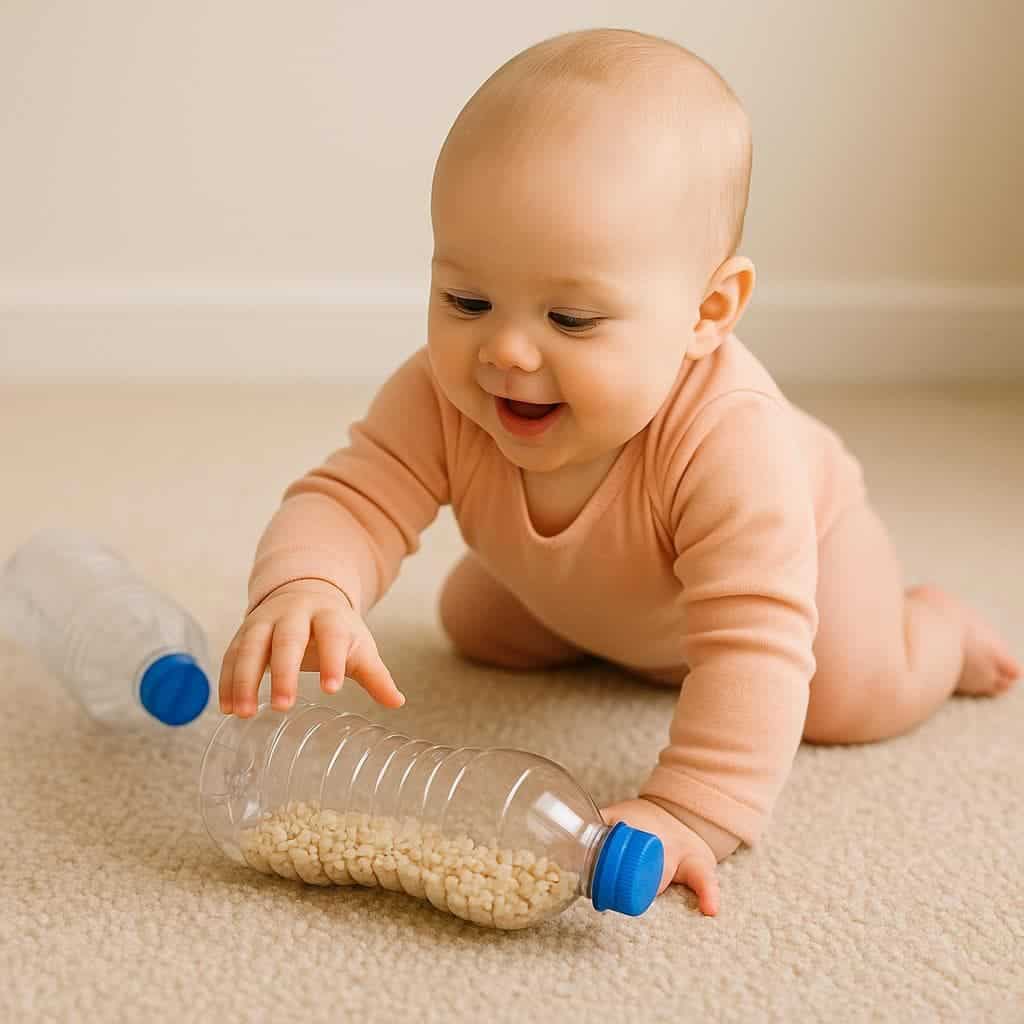
Empty water bottles are a source of endless fascination for babies, who love shaking, rolling, and squeezing them. For added fun, fill the bottle with dry beans or rice and seal it tightly to create a DIY shaker that mimics the appeal of store-bought rattles. These bottles also work as rolling toys, encouraging babies to crawl and reach. Always supervise play to ensure safety.
10. Muffin Tins
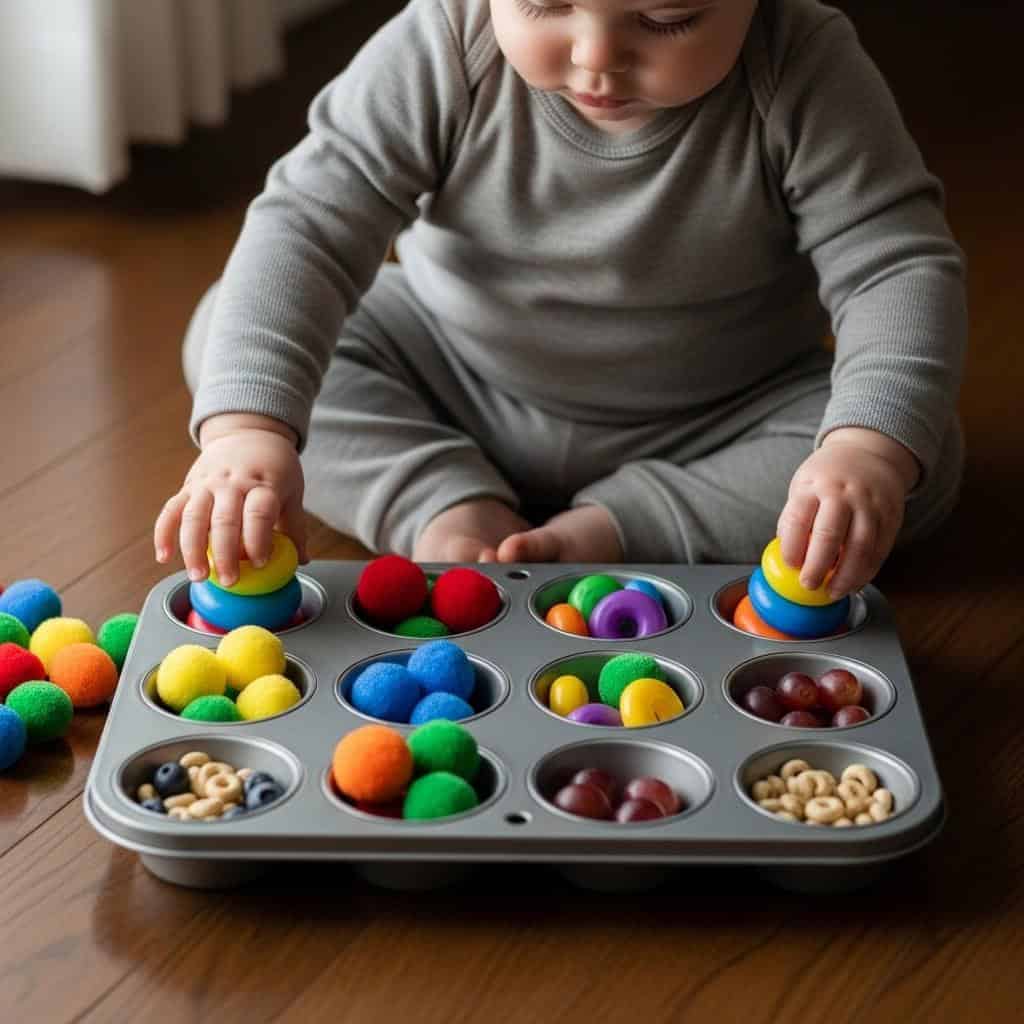
Muffin tins are excellent for sorting activities, allowing babies to place balls, pom-poms, or even snacks into each cup. This simple activity helps build fine motor skills and hand-eye coordination, functioning much like commercial sorting boards or trays. Babies enjoy the repetitive motion of picking up and dropping objects, which also introduces early concepts of categorization and organization.
11. Mirrors (Unbreakable)
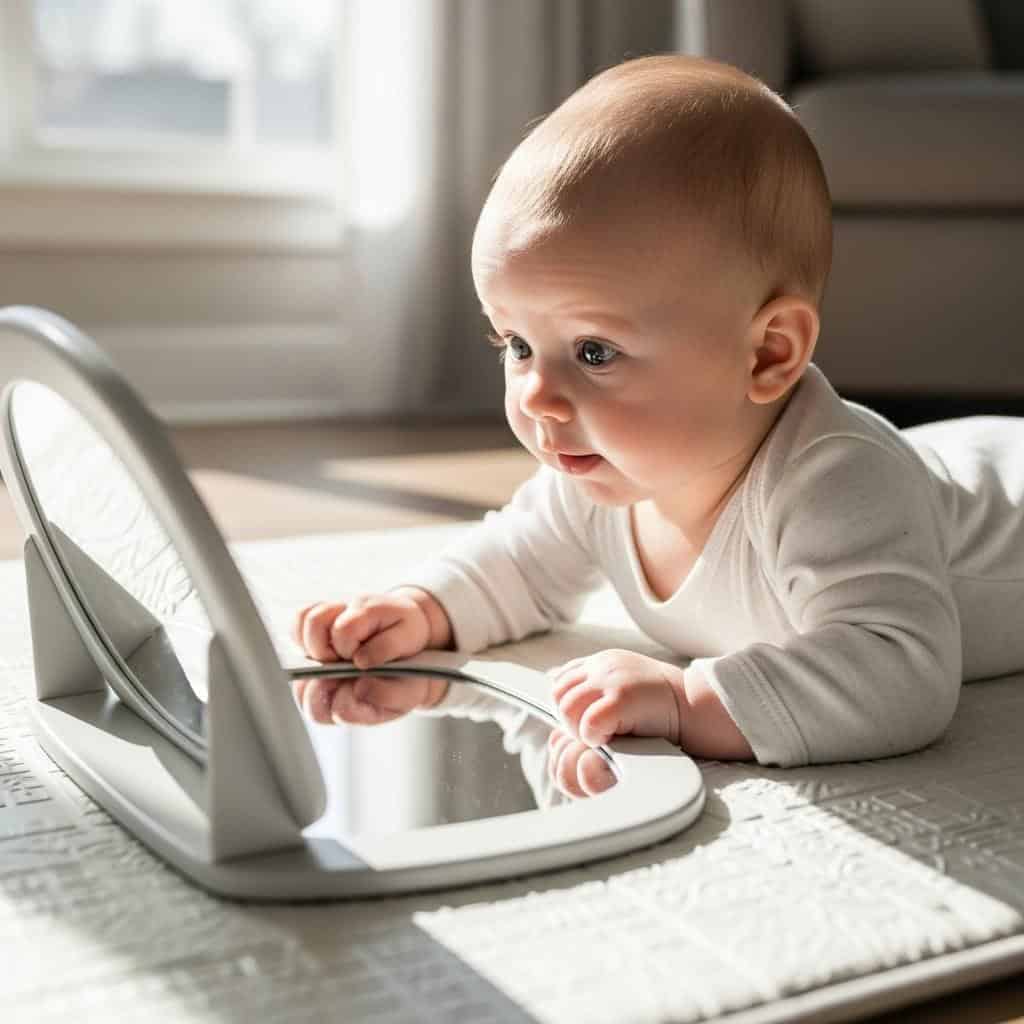
Babies are naturally captivated by their own reflection, making unbreakable mirrors a wonderful tool for play. These mirrors promote self-recognition, visual tracking, and facial exploration, offering similar developmental benefits as commercial infant mirror toys. Always ensure the mirror is sturdy and safe for little hands. Placing it during tummy time encourages longer sessions and interactive engagement.
12. Empty Tissue Boxes
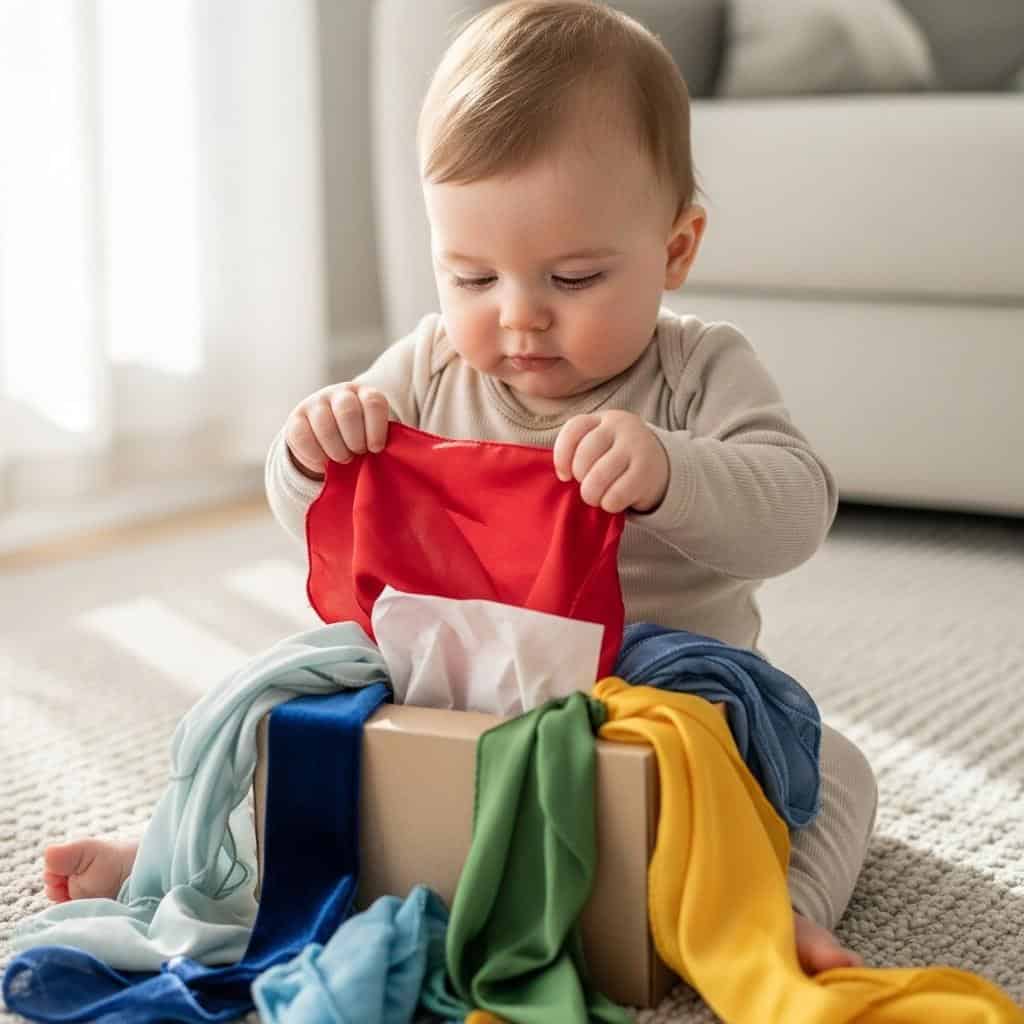
Empty tissue boxes transform into engaging sensory toys when filled with fabric scraps or scarves for babies to pull out. This activity mimics popular commercial ‘pull toys’ and sensory boxes, fostering grasping, hand strength, and fine motor development. Babies delight in the repetitive action of pulling and discovering new textures and colors, making it a simple yet effective homemade toy.
13. Pots and Pans
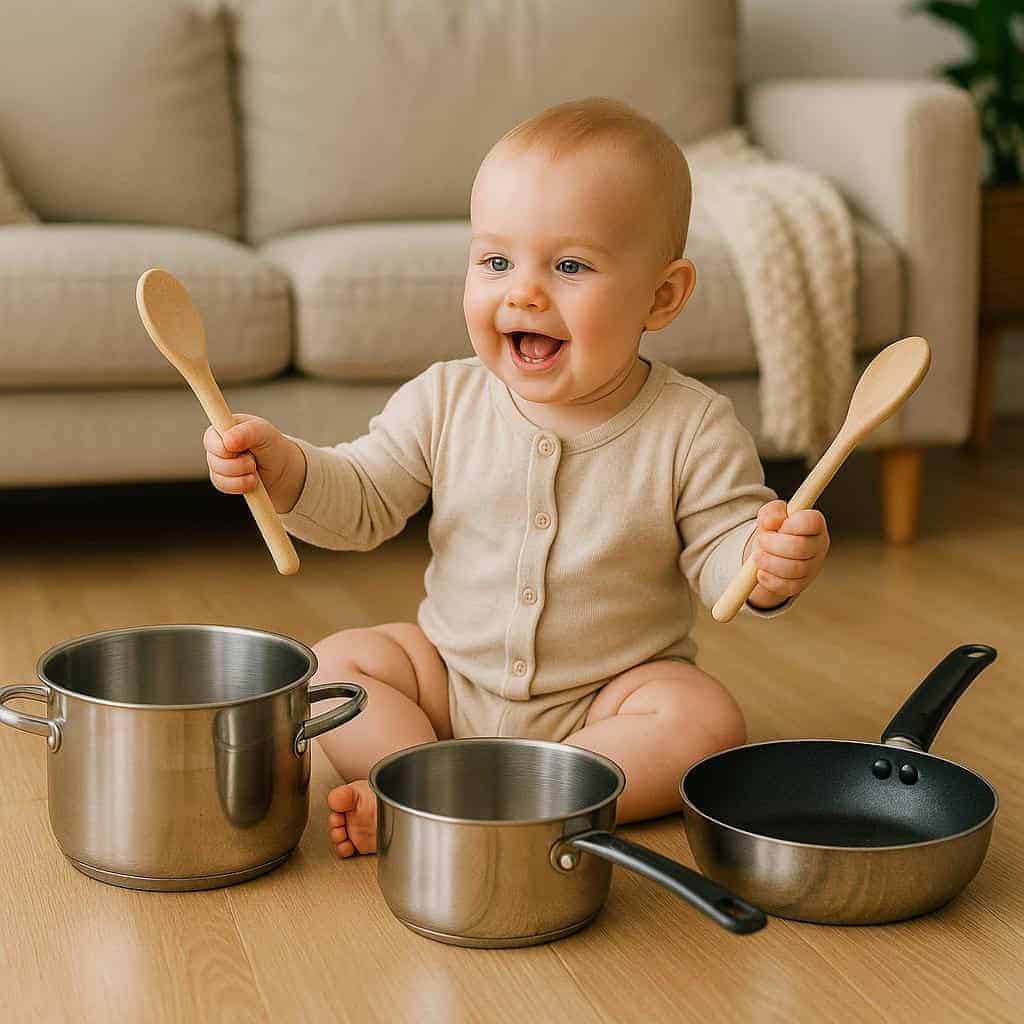
Pots and pans have long been a favorite for babies craving musical play and sound exploration. The joy of banging on them helps develop rhythm, coordination, and auditory awareness, often surpassing the appeal of plastic noise toys. Their durability ensures hours of safe, supervised fun when used on the floor with soft utensils. Always supervise closely to prevent injury and minimize loud noise.
14. Clean Socks
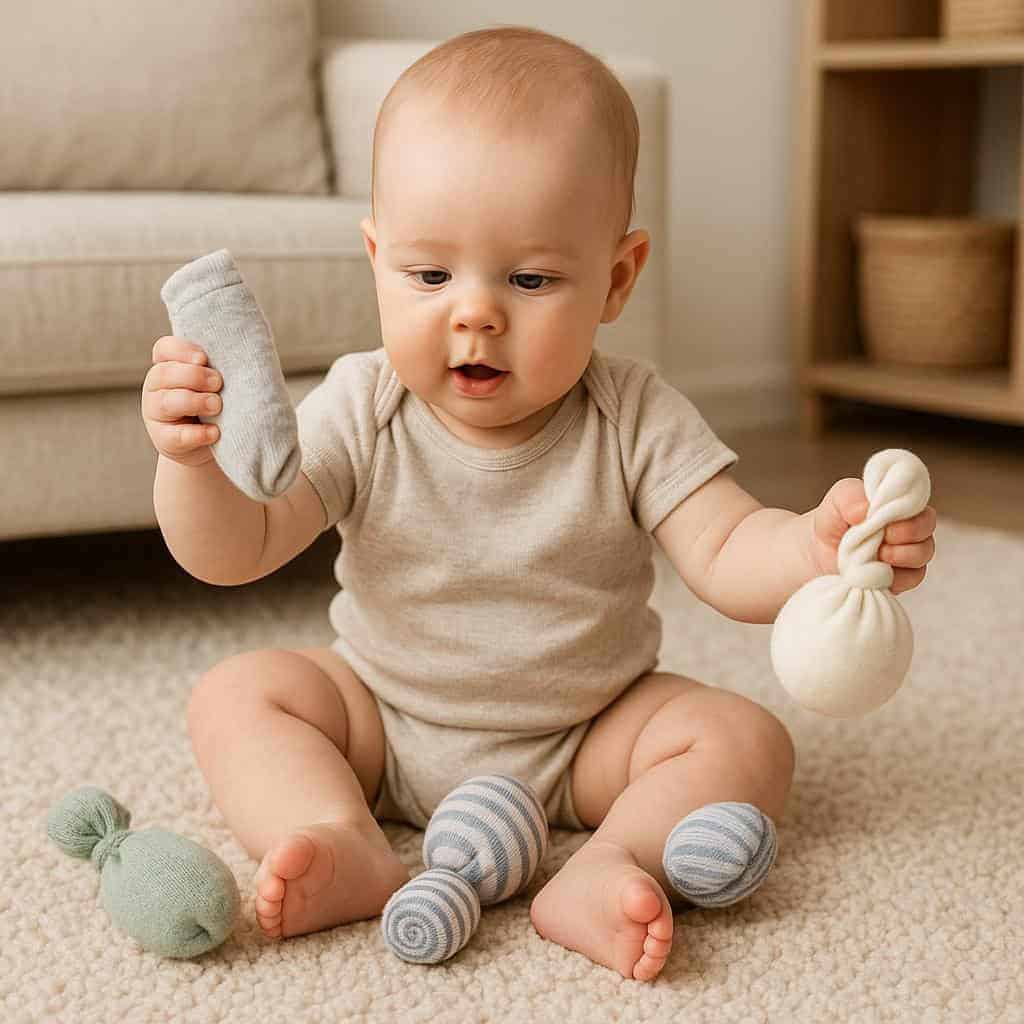
Clean socks become delightful playthings when rolled, stretched, or lightly filled for soft tossing games. Babies enjoy grasping the different textures, squishing and squeezing, and tossing them safely. These simple activities offer sensory exploration and help develop hand strength and coordination, much like soft plush toys or beanbags. Socks are gentle, washable, and easy to adapt for various ages.
15. Large Plastic Lids
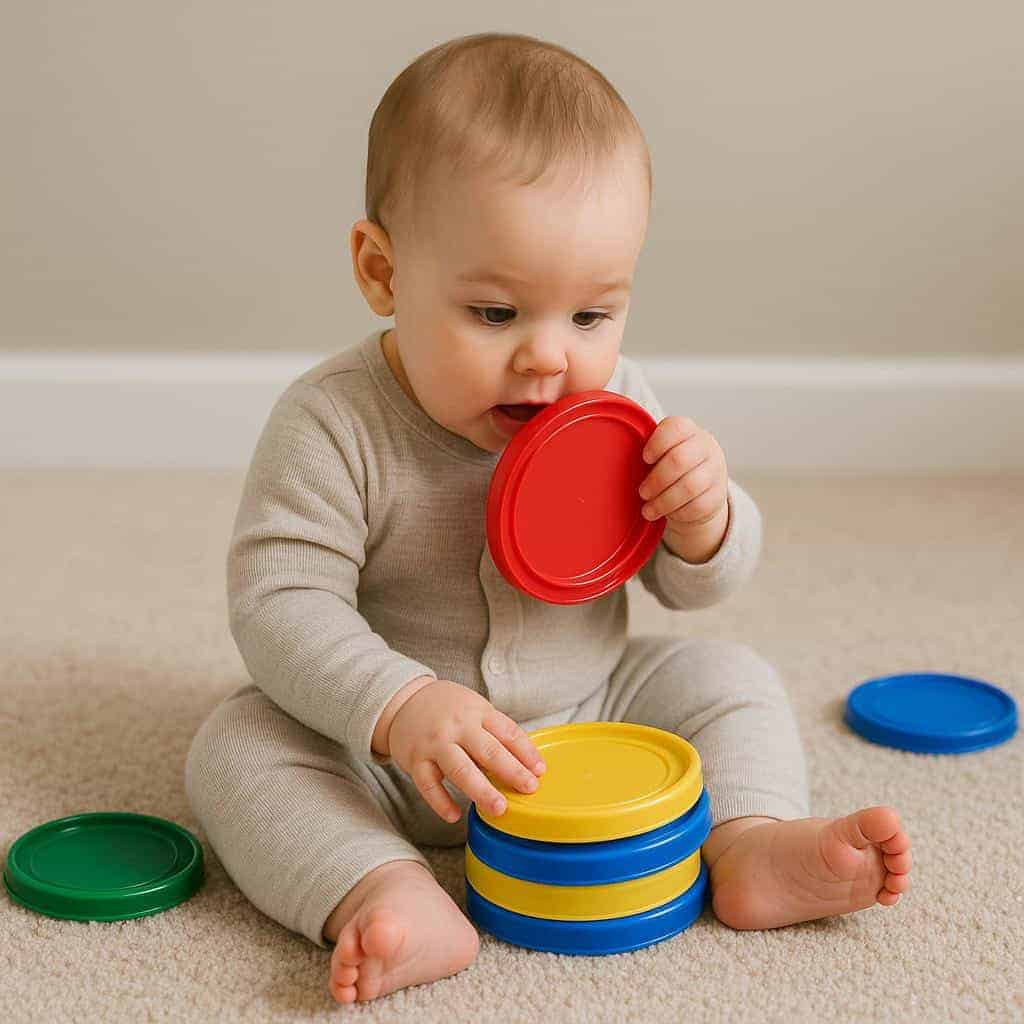
Large plastic lids capture babies’ curiosity as they spin, stack, or sort them during play. Their size makes them safe for mouthing when supervised, reducing choking risks. Babies enjoy the smooth texture and sound, using them for tactile exploration and practicing coordination—much like commercial disc toys. These everyday items are easy to clean and offer endless open-ended play possibilities.
Conclusion
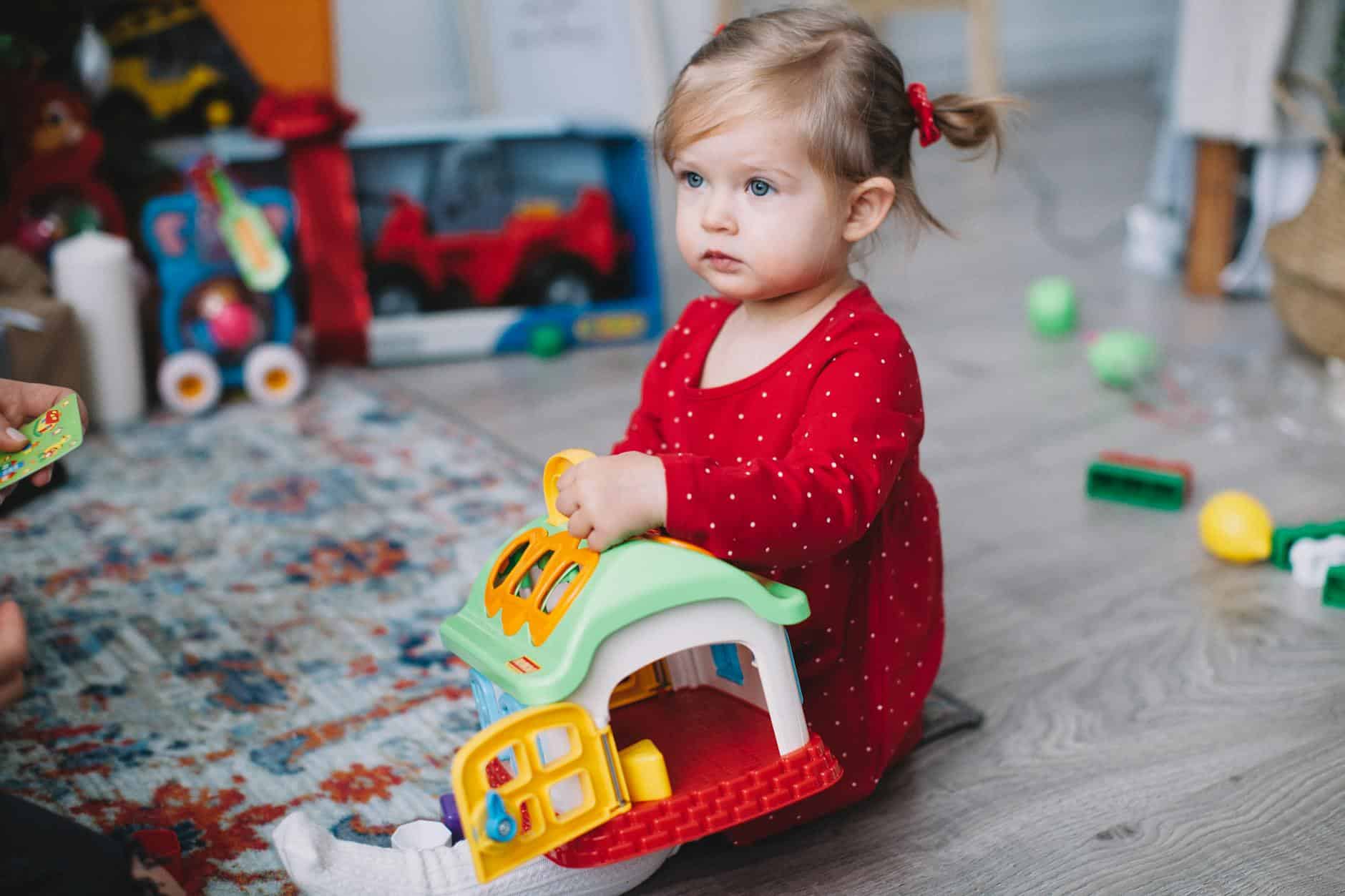
Everyday household items offer endless opportunities for creative play and skill development, proving that you don’t need expensive toys to spark your baby’s curiosity. With proper supervision, common objects can provide safe, stimulating fun that encourages sensory exploration and open-ended learning. Embracing resourcefulness not only saves money but also supports your child’s growth in imaginative, meaningful ways.
.article-content-img img { width: 100% }




